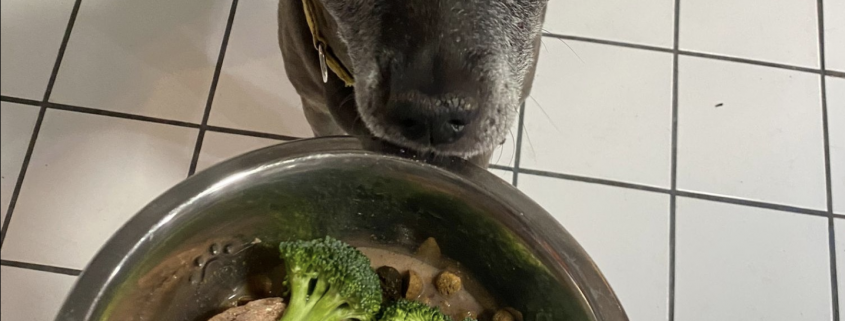News Flash: The study in question is NOT peer-reviewed. It’s also strictly theoretical, meaning it may (likely) not work, or even be dangerous.
I could probably go on forever questioning why the media (and even some “reputable” associations) continue to share non-peer reviewed, non-verified information, but I won’t. We know a great headline catches clicks and shares. And before you go on and say this has absolutely nothing to do with pets, or pet food – it does! This is just parallel example about how bad science is used to propagate either a false sense of security, fear – and sell a product. I’m also not “anti” CBD, but that isn’t the point. There are several applications where it is useful for pets and people, but in this instance there simply an overabundance of bad information swirling around CBD preventing and/or treating COVID-19 that makes for a great example for my point: why it is so important to dive deeper into everything.
I hope that those who read this see it as an opportunity to learn how to challenge information and data. So often we look for someone to just give us “the answer” and it is just not that simple. Determining what is right for you and your pet in your unique situation will take some work. Take this article as an example of how to learn about how to do that work, vet your sources and arrive at an educated conclusion.
FDA Oversight & COVID-19
As a background to the entire discussion it is important to realize that an “era of speed to market” is upon us. The FDA has allowed some alternative testing methods while also accelerating the process for drug and vaccine development. While the FDA is still overseeing these processes, they are reviewing studies and data more efficiently given the current pandemic. Having said that, the FDA has also acknowledged that many companies are trying to take advantage of people’s fears by offering up solutions like X, Y and Z – and if you see CBD companies using this “study” to gain attention it is proof of just that. In fact, the FDA has been aggressively sending warning and cease/desist letters to companies making these claims because they are in clear violation of the Food Drug & Cosmetic Act. You can see a lot of those warning letters for CBD companies here: FDA Issues CBD Warning Letters.
This isn’t the first time companies have taken advantage of a crisis, or preyed upon people’s fears and vulnerabilities. Manufacturers of colloidal silver products have also recently received warning letters for claims that it prevents and/or treats COVID-19. We can only wait for irresponsible CBD companies to make unsubstantiated claims coming off the heels of this “study”. One would hope that this prompts CBD manufacturers and marketing agencies to be responsible and transparent with their products.
Understanding Peer-Review vs. Non-Peer-Reviewed
The public largely doesn’t realize that research journals, some great and some not so great, are pre-publishing papers without peer-review. This is simply to share current research and information freely with other researchers for the sake of collaboration. Typically, a lot of this information is not as easily accessible to the public because many of these papers are somewhat gated through journal memberships, and/or with a pay-per-article download/view. Research manuscripts go through vetting processes which doesn’t eliminate, but at least filters out a lot of “bad science” before it makes its way out to the public and media outlets. This current “open access” of information is a great thing for the scientific community – however it is NOT a great thing to be circulating potentially harmful and incomplete information to the general public who generally does not understand if this information is verified, factual or theoretical – they simply see “study” and think, it MUST be true because it’s “science”. Unfortunately humans make mistakes, manipulate data and come to flawed conclusions – either by error, omission and/or on purpose. Hence the need for peer-review.
Not Applicable to “The Real World”
The reality is that much of the information out there regarding Covid-19 prevention and treatment is inapplicable to the real world as they are preliminary experiments that were conducted in a controlled environment, on small scales and with measured variables – and many have not had peer-review. This will obviously change over time, but this is the current reality and the reason why so many people are working on this all over the world at warp speed. Am I Covid-19 or infectious disease expert? No. But I do know how research works and what the value of scaling research, test-retest repeatability and of course the value in peer-review and critical analysis– and much of the information out there has little to none of it.
The CBD/COVID-19 Study:
So, to finally summarize this COVID-19/CBD “study”; researchers acknowledge that SARS-CoV2 is transmitted through respiratory droplets, with potential for aerosol and contact spread. The virus uses receptor-mediated entry into the human host via angiotensin-converting enzyme II (ACE2) that is expressed in lung tissue, as well as oral and nasal mucosa, kidney, testes, and the gastrointestinal tract.
Having said that, the researchers hypothesize (educated guess) that a theoretical path for combating, or decreasing susceptibility, of this virus could be modulation of ACE2 levels in these gateway tissues. The researchers have potentially identified 13 high CBD-C containing C. sativa varieties of the hemp plant that have the potential to modulate ACE2 gene expression and ACE2 protein levels. Further, their initial data suggest that some C. sativa extract down-regulate serine protease TMPRSS2, another critical protein required for SARS-CoV2 entry into host cells. They theorize that these substances could be used as an active ingredient in a mouthwash-type product to reduce the incidence of viral entry via the oral mucosa.
It’s also important to note that all of the authors are employed by one or more start-up companies engaged in medical cannabis and disease research. While not always the case, this could lead to bias in the results. Again, this further highlighting the need for peer-review.
STUDY CONCLUSION: The authors recognize that their hypothesis needs further large-scale validation as a potential AJUNCT therapy (not mainline treatment) for COVID-19.
The Study in Context and the Media:
Unfortunately, we didn’t see the media articles explain the mouthwash as an adjunct treatment. Leaving the general public, the potential to assume that smoking or using other various marijuana and/or hemp products could help prevent and/or treat COVID-19. The sad thing is that people will read headlines at face value and think that smoking a sativa strain of the hemp plant may provide some protection or therapy against COVID-19. Worse, it may influence some to try using this for their pets. Regardless, we know that smoking is actually increases risk-factors for COVID-19 complications and other respiratory diseases. This just highlights the medias frenzy to distribute click-worthy information, without verification and obviously without regard for human (or animal) health or safety. If only the media visited preprints.org they would have found a highlight at the top that says “This version is not peer-reviewed” which is an indicator that it should not have been widely distributed.
In conclusion, it’s important to always vet the source of any information relating to health and nutrition. Find the original source of the information, in this case it happened to be a non-peer-reviewed theoretical paper which needs validation of said theory. While it may provide hope as an adjunct therapy for some, only a series of carefully designed scientific experiments, trials and validation methods will tell. Take that for what it is worth.
Nicole Cammack
Nicci is the owner of award-winning NorthPoint Pets & Company, in Connecticut. She is also the Founder & CEO of Undogmatic Inc. Her undergraduate and graduate education includes biology, chemistry, business, and nutrition. She has worked in the pharmaceutical industry on multiple R&D projects and has had the privilege to learn from leading international figures in the human and pet health industry. She regularly lectures at national conferences, including federal, state, and municipal K9 events. Her current research involves identifying pathogenic risk factors and transmission among raw fed pets through a comprehensive worldwide survey.
www.northpointpets.com
www.undogmaticinc.com












